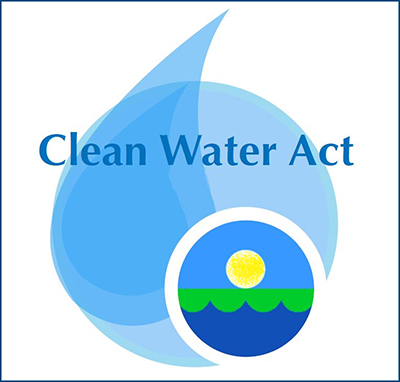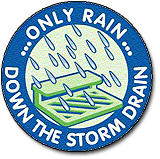Clean Water Act
Clean Water Act
 Congress first passed the Federal Water Pollution Control Act in 1972. Amending the law five years later in what became known as the “Clean Water Act” Congress regulated by permit all end-of-pipe or "Point Source" discharges to navigable waters of the United States. In 1987, it extended the Clean Water Act to cover indirect or “Non-Point Source” pollution, most prevalent in stormwater runoff.
Congress first passed the Federal Water Pollution Control Act in 1972. Amending the law five years later in what became known as the “Clean Water Act” Congress regulated by permit all end-of-pipe or "Point Source" discharges to navigable waters of the United States. In 1987, it extended the Clean Water Act to cover indirect or “Non-Point Source” pollution, most prevalent in stormwater runoff.
Stormwater Runoff
Stormwater runoff is water from rain or melting snow that flows from roofs, paved roads and parking lots, bare soil, and sloped lawns that cannot be absorbed in the ground. As it flows, the runoff collects pollutants like fertilizers, pesticides, oil and grease, animal wastes and sediments and carries them directly to coastal waters or to storm drains, which, in the case of coastal communities, often discharge to harbor waters. These pollutants restrict recreational use and degrade the marine habitat resulting in bathing beach closures and shellfish harvesting restrictions.
Common Pollutants
• Nutrients: Nitrogen & phosphorous (fertilizers, animal wastes, septic discharge)
• Man-Made Chemicals: Pesticides & herbicides
• Pathogens: Bacteria & Viruses from pet waste and failing septic systems
• Metals: Copper, Lead, Mercury, Chromium in car brake linings and tires
• Hydrocarbons: Gasoline and Oil leaks from faulty tanks and improper disposal
• Sediments: Dirt from road runoff and construction sites
• Organic Materials: Oxygen depleting Leaves, Grass Clippings, Plant Materials
• Trash and Debris: Litter is aesthetically unappealing and a hazard to wildlife
Non-Point Source Pollution Control

Controlling non-point source pollution remains a major challenge. While stormwater runoff is the foremost non-point source of pollution, pollutants can be airborne and even migrate through soil, as occurs with failing septic systems. To deal with the challenge, the U.S. Environmental Protection Agency (EPA) established Stormwater regulations in 1990.
In Phase I, EPA required all large municipal separate storm sewer system (MS4) owners to adopt stormwater management programs. It issued corollary regulations, regulating industrial activities and all construction projects, public and private, that disturbed greater than five (5) acres of land. Phase II regulations, which took effect in 2003, cover small MS4s, including the Town of Huntington and construction projects that disturb more than one (1) acre of land.